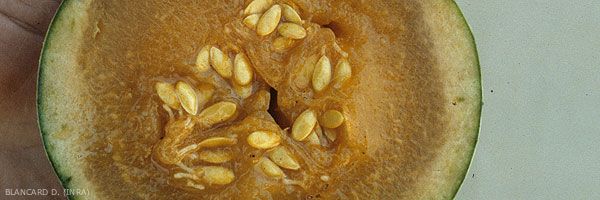
Glazing
This non-parasitic disease of melon fruits is characterized by the glassy appearance of part of the flesh located between the bark and the cavity containing the seeds (Figure 1). This quickly acquires a waterlogged appearance, becomes deliquescent, and gives off an odor of alcoholic fermentation. The outside of the fruit remains symptom-free for quite a long time, while the phenomenon spreads throughout the flesh. On the other hand, a wet deterioration is visible on the surface of the fruit at a very advanced stage of vitrescence (figure 2).
Among the factors likely to promote the expression of this condition, we can cite:
- an excessive fruit load;
- poor pedo-climatic conditions, with cold soils not very conducive to root development and generating plants that are not very vegetative;
- periods of cloudy weather;
- poor pedo-climatic conditions, with cold soils not very conducive to root development and generating plants that are not very vegetative;
- periods of cloudy weather;
- an unbalanced mineral diet in calcium and potassium;
- differences in varietal sensitivity.





